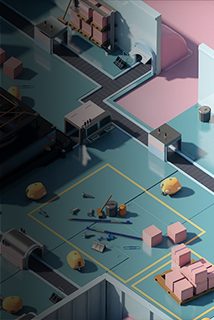Functional Symbiosis of Art Direction and Proceduralism
CEDEC 2018

This talk by SEED's Anastasia Opara covers the approach for procedural layout generation and placement in Project PICA PICA. The project posed a unique challenge as the levels were not created for humans, but for self-learning AI agents. Therefore, the level system had be flexible to meet the agents’ needs and ensure navigability, gameplay elements as well as adhere to the art direction.
We used Houdini from the very early stages to the final release: from co-creating art-direction to exporting final levels into our in-house R&D engine Halcyon. From this talk, you will learn how in a team of only 3 artists we created a functional symbiosis of art direction and procedural system in under 2 months as well as what challenges and solutions we had during our ‘procedural journey’.
アートディレクションとプロシージャル法の実用的共生
このセッションは、Electronic Arts 社の研究開発部門 SEED での PICA PICA プロジェクトにおけるプロシージャルレイアウト生成と配置へのアプローチについて紹介します。このプロジェクトでは、レベルを人間向けに作るのではなく、自己学習を行うAIエージェント向けに生成するという特異な挑戦に挑みました。よって、このレベルシステムには、エージェントの要求に対処できる柔軟性、操作性、ゲームプレイの要素、そしてアートディレクションにも合致することが求められました。
Houdini は、アートディレクトションを決定する最初期段階から内製エンジンである Halcyon への出力を行う最終リリースまで、すべての段階で使われました。この講演を通じて、アーティスト3人だけのチームがアートディレクションとプロシージャル法が共生し実動するシステムを2ヶ月で作成し、その「プロシージャルの旅」における様々な問題と解決についての知見を得ることができます。
Click here to view the slides directly on SlideShare.
You can also download the presentation:

